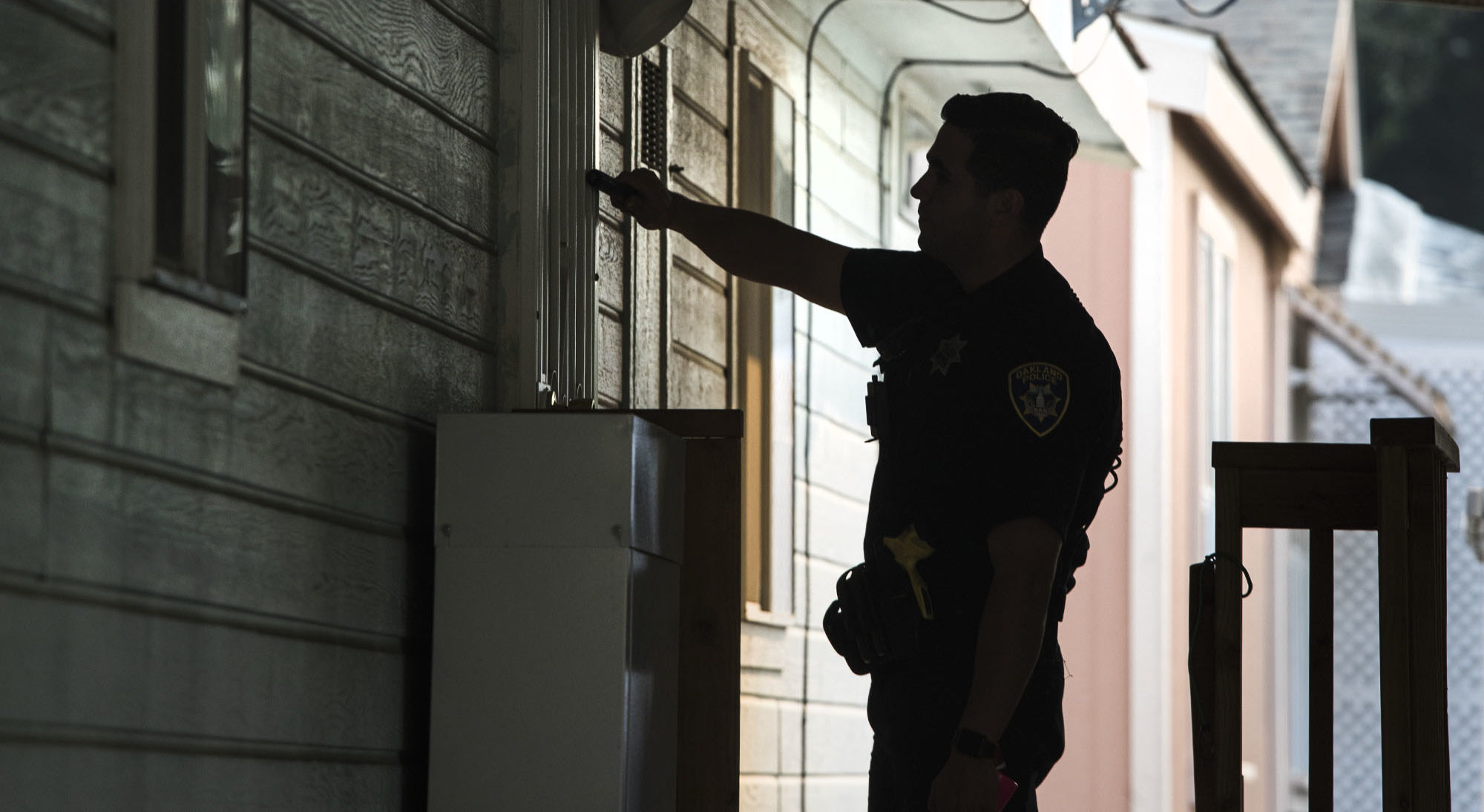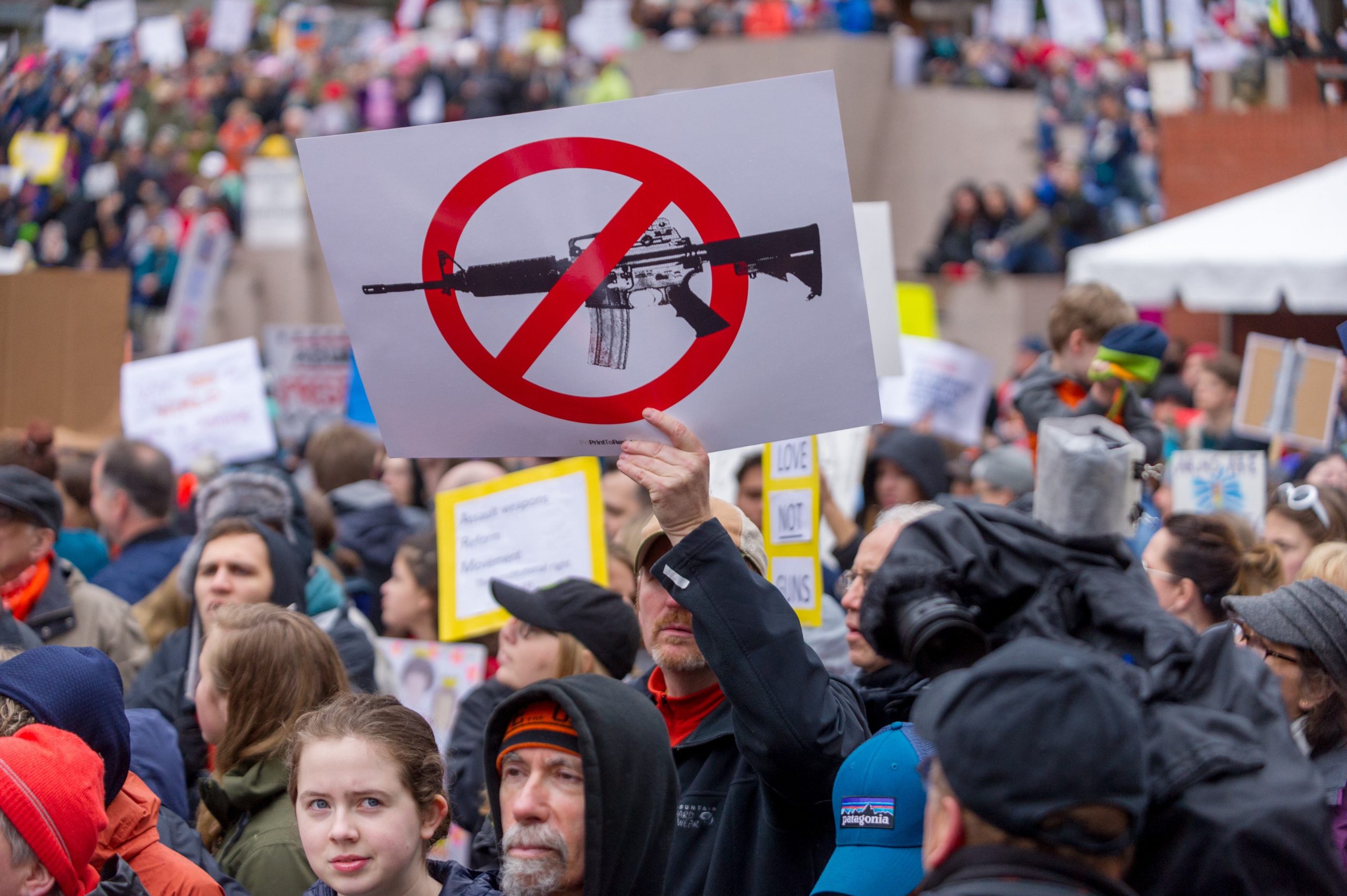In 2018, at a car sales lot in San Diego, employees felt something was off.
In a break room, an employee allegedly praised the perpetrator of the Las Vegas mass shooting, remarking that he was genuinely impressed by the death toll. The man said that he had toyed with the idea of attempting a similar attack, perhaps at a church or synagogue. The dealership’s employees grew especially anxious when their co-worker, who they knew owned an assault rifle, said he would kill them all if he were ever to be fired.
The man’s co-workers called the police, fearing for their safety. Officers didn’t have enough evidence to arrest the man. But they did have enough to take away his guns. Using statements from employees of the dealership, police requested a Gun Violence Restraining Order, which allows a court to remove a person’s firearms if they pose a threat to themselves or others. The order was granted, and police seized the man’s two handguns, two shotguns, and an AR-15.
It was a textbook implementation of a GVRO, which are known colloquially as red flag laws. The policies, which generally allow third parties to petition a judge to confiscate someone’s guns, burst into the national consciousness following the school shooting in Parkland, Florida, in 2018. Despite displaying clear warning signs of violence, the killer was able to purchase and possess the AR-15 he used to kill 17 people. Since Parkland, a dozen states have passed their own GVRO laws and several others are currently considering them. The policies have received renewed attention following the recent eight-day scourge of high-profile mass shootings in California, Texas, and Ohio. President Donald Trump has even called for a bill to incentivize more states to pass GVROs.
But for all their popularity and promise, GVROs remain relatively untested because many municipalities simply don’t use them very often. San Diego is an exception. California passed its GVRO law in 2014, in response to the Isla Vista mass shooting. And since 2017, San Diego County has issued more than 300 orders, more than any other county in the state. They have been used to intervene in escalating cases of domestic violence, to prevent potential suicides, and with people with potentially dangerous mental illness. In the end, the police have seized more than 400 weapons and nearly 80,000 rounds of ammunition.
In California, GVROs remove a person’s ability to own or purchase guns for up to a year. If a court feels the person still presents a danger to themselves or others when the order expires, it may opt to renew the order. People subject to an order may appeal, seek legal representation, and even have the prohibition cut short.
San Diego has been using the law in its full effect, applying it to myriad incidents. And that’s mostly because of City Attorney Mara Elliott. “I have two boys and they were roughly the same ages as the victims who were murdered at Sandy Hook,” Elliott said. “There was this nagging feeling I needed to do more.”
Elliott’s office provided a range of examples in which law enforcement officials deployed GVROs to remove guns from dangerous people.
In 2018, Nathan Lee Brogan was arrested for shooting a city employee. Afraid that Brogan would access weapons while out on bail, the city successfully filed for a GVRO. Police seized 56 firearms, explosives, and thousands of rounds of ammunition from his home.
That same year, a 41-year-old man sent text messages to his family threatening suicide, and attached a photo of himself holding a handgun to his own head. Police put the man on an involuntary psychiatric hold, and after a GVRO order was issued, the man handed over a pistol and two homemade ghost guns.
In early 2019, another man forcefully baptized his younger brother in a bathtub at gunpoint. Concerned family members asked the police to intervene, petitioning the court to grant a GVRO to remove the man’s firearms.
“We can never prove that we saved lives, but we believe we have,” Elliott said.
A study published this week in the Annals of Internal Medicine echoed that sentiment and included some figures on California’s GVRO law. The study, which looked at orders issued between 2016 and 2018 from across the state, found 21 cases that disarmed potential mass shooters.
An internal analysis conducted by the City Attorney’s Office of the first 100 GVROs it issued in 2017 and 2018 found that 40 percent of the orders involved family violence or stalking. Suicidal threats were a factor in 25 percent of the orders. Dementia, PTSD, or other mental health issues were cited in 18 percent. And 10 percent involved juveniles or adults who made threats on social media.
“There may not be a crime, but there are the red flags that someone needs a cooling-off period,” said John Hemmerling, an assistant city attorney who oversees the Criminal and Community Justice Division of San Diego City Attorney’s Office.
Despite San Diego’s successes, few other California counties have followed suit. According to records obtained by The Trace and the Voice of San Diego, implementation of the law has been extremely spotty in most metropolitan counties. In 2018, Los Angeles County judges issued just 31 GVROs. San Francisco issued only one.
Records show that San Diego County handed out 185 GVROs in that same year.
San Diego’s runaway success with GVROs has made Elliott something of a spokesperson for the policy on a national level. It’s also inspired state leaders to tap Elliott to train other law enforcement agencies on how to use them. In 2018, the San Diego City Attorney’s Office hosted a regional symposium for stakeholders on GVROs and lawmakers have set aside a budget to take those trainings on the road. Elliott’s team has since conducted more than 18 trainings for more than 220 law enforcement and government agencies.
“We wanted to break through the fallacy that perhaps it’s difficult,” said Elliott. The training program started with a budget of $50,000. In June, citing the program’s success, California Governor Gavin Newsom approved an additional $250,000.
“I get calls all the time where [police] tell me we just prevented a shooting,” said Jeff Brooker, a deputy city attorney who works in the training program. He added that red flag laws have created a cultural change among police officers who tended to be reactive in the way they approached crimes. “It’s a paradigm shift,” he said. “Now, they are looking forward.”
In the California Legislature, lawmakers are also paying more attention to the spread of GVROs. In December of 2018, California Assemblymember Phil Ting introduced a bill that would allow school workers, employers, and coworkers to file GVROs. The bill is currently pending in the state Senate Appropriations Committee.
But the orders have also drawn concerns. Elliott’s office has been accused of not providing adequate safeguards to prevent GVROs from being abused or disenfranchising Second Amendment rights. And some critics have even suggested that Elliott’s office is using GVROs as a political ploy for her now-contested seat.
Michael Schwartz, the executive director for the San Diego County Gun Owners, a gun rights group, said that his organization believes in removing guns from dangerous people, particularly those who have lost mental faculties because of conditions like dementia. But he said Elliott’s office has not been forthcoming about the mechanisms instituted to stop abuse. “I had a concern with public policy, and when she found out I had a valid concern, she shut down discourse,” he said of Elliott.
Elliott’s office responded by saying they met with San Diego County Gun Owners early in the program’s implementation, and still invite the organization to bring to their attention any GVRO that violates or infringes upon someone’s rights. “They have not done so to this date,” said a spokesperson for the San Diego City Attorney’s Office.
The office says that it’s trying to balance everyone’s interests. But Elliott plans to continue aggressively using a tool that she sees as a clear boon to public safety.
“We have no problem with responsible people having guns,” she said. “Our concern are the people who are no longer responsible. That’s when we’ll step in.”


